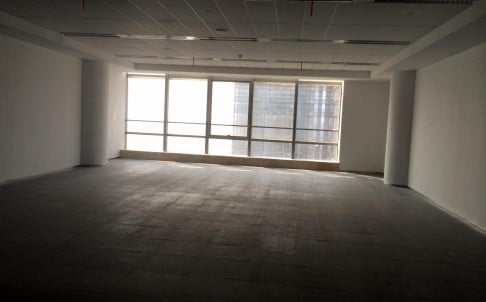By Daniel Ren From The South China Morning Post
Authorities built waves of new towns believing demand would continue unchecked for decades
According to property firm Jones Lang LaSalle, vacancies in Grade A office buildings in the area’s major cities will stay high in the coming years due to weaker-than-expected demand.
While a loan default by a developer in Zhejiang sparked fears of a collapse of the residential property sector, the situation in the office sector appears to be even worse . Residential property developers can at least slash prices to dispose of flats to recover part of their investment. Half-empty buildings, however, are not just white elephants but financial black holes.
Jones Lang LaSalle found that at the end of last year, occupancy rates for Grade A office buildings stood at 58 per cent in Wuxi, Jiangsu, and 30 per cent in the Zhejiang capital, Hangzhou . In other major delta cities, which together make up the most vibrant and developed regional economy on the mainland, occupancy rates also hovered around 30 per cent last year.
In Wuxi, the vacancy rate was expected to stand at 48 per cent in 2016, it said. By the end of that year, the stock of prime office space in the city would nearly triple from last year’s amount to 565,000 square metres.
It is easy for government officials to defend themselves by saying the high vacancy rate is only “temporary” and some time is needed before the fresh supply of offices is “digested” by an influx of fresh capital in future.
Nonetheless, Jones Lang predicted that demand would not be strong enough in the coming years to drive occupancy rates down.
Last month, developer Zhejiang Xingrun Real Estate, based in Ningbo in Zhejiang, defaulted on a loan, adding more evidence to the argument the property market was at increased risk of collapse.
Such fears appear well founded.
Over the past decade, delta cities have pulled out all the stops to launch one new town one after another. Located on the suburban fringes of each city, they are designed to accommodate millions of residents and attract more corporate investors.
The boom was based on officials’ unshakeable faith that sustainable growth of delta cities would last for decades.
Developers splashed out billions of yuan to build office buildings, shopping malls and entertainment complexes in the new towns, believing an affluent population of 75 million would be enough to support their businesses. Unfortunately, reshuffles of municipal officials led to dramatic changes in urban development plans. New leaders would map out their own blueprints, earmarking more untapped land for new high-rise residential areas or industrial zones .
Incumbent officials had the clout to draw new investors by offering incentives such as tax breaks or promises of procurement contracts for manufacturers that set up in the new towns.
Officials took it for granted that the size and scale of the local economies would ensure success in a battle for supremacy among the region’s rival cities.
As the fresh supply of office and retail space continues to soar across the delta, a similar rise in the number of white elephants seems inevitable.
It is also a strong reminder to Premier Li Keqiang, an advocate of rapid urbanisation. Without meticulous planning for a long-term development, urbanising the vast areas of the mainland can only lead to a glut of office and retail space, even in the prosperous Yangtze Delta.



